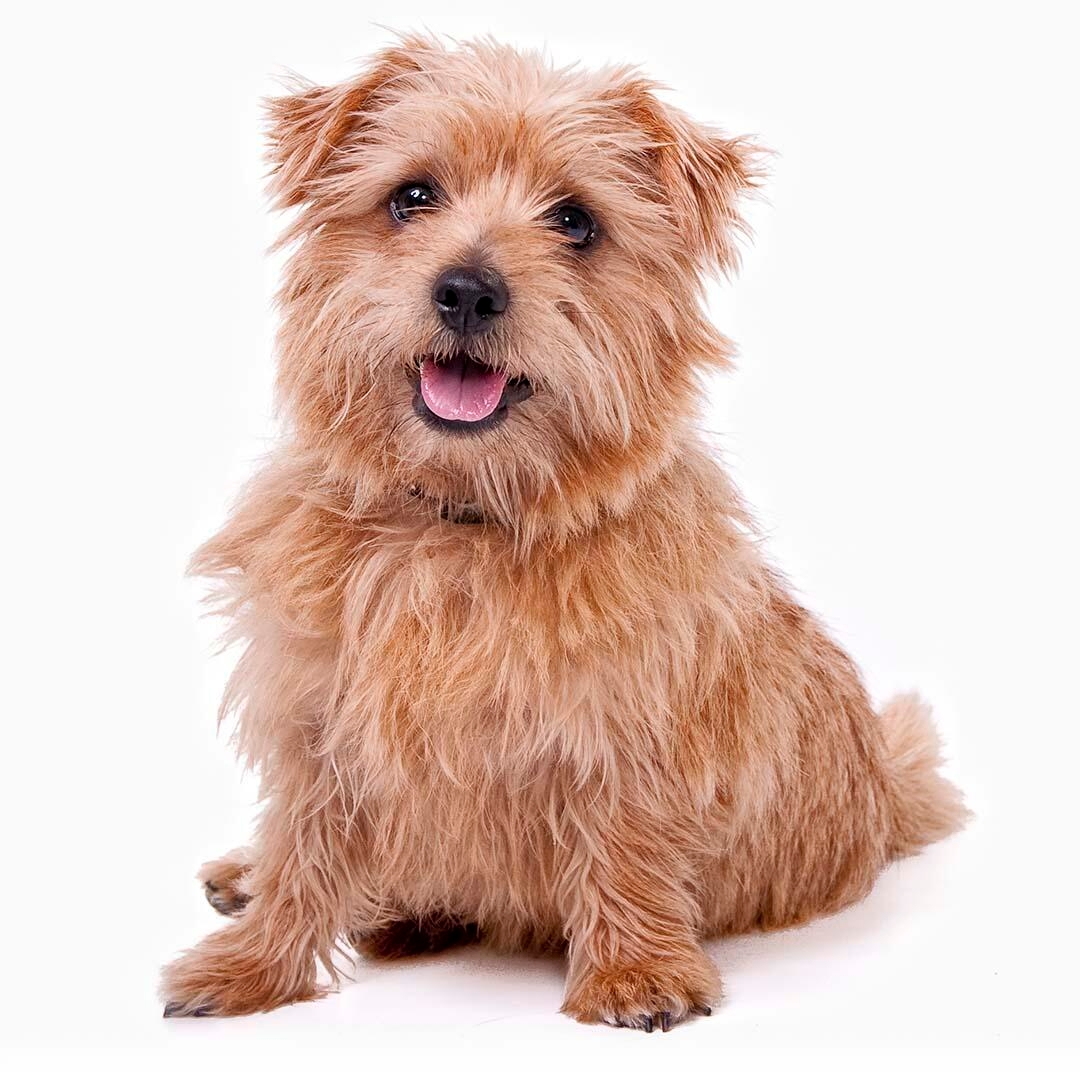
| Family-friendly: | 4/5 |
| Exercise needs: | 4/5 |
| Easy to train: | 5/5 |
| Tolerates being alone: | 3/5 |
| Likes other pets: | 4/5 |
| Energy level: | 4/5 |
| Grooming needs: | 3/5 |
| Shedding: | 1/5 |
The Norfolk Terrier breed may suffer from:
- Patellar luxation
Priority Kennel Club health schemes and testing:
None but there are several recommended schemes that the Kennel Club recommends which can be found here.
Like most terriers, the Norfolk is clever, active and often surprisingly tenacious for their size. Unlike many however, they are social with others, friendly, cheerful and tolerant - and generally good with children.
| Family-friendly: | 4/5 |
| Exercise needs: | 4/5 |
| Easy to train: | 5/5 |
| Tolerates being alone: | 3/5 |
| Likes other pets: | 4/5 |
| Energy level: | 4/5 |
| Grooming needs: | 3/5 |
| Shedding: | 1/5 |
The Norfolk Terrier didn’t become a separate breed until 1964 and up until then, they were just looked on as a variation within the Norwich Terrier breed and so their histories are the same.
The Norfolk’s origins can be found liked closely to Cambridge University in the late 1800s. It was fashionable for the sportier of the undergraduates to own a particular type of terrier that was being bred in a livery stable in Trumpington Street which ran along the back of several of the colleges. These small working terriers were put to work as college ratters, and as the students lived and socialised together, their dogs had to be equally social and indeed they would work in a pack.
It was one of these dogs, a sandy coloured dog called Rags, that is credited with being the founding father of both the Norwich and Norfolk Terriers that we know today.
Until 1964, the drop eared dogs were still classified as Norwich Terriers but after this date, the two were kept separate with the drop-eared dogs being called Norfolks.
Ideal Norfolk owners understand that this cheeky, bright eyed little dog is still an intelligent and quick-witted terrier, despite their dinky size. You’ll be able to provide all the training and exercise a dog three times the size would need, as a bored Norfolk is a loud and destructive creature. Great with children as long as they’re old enough or sensible enough to understand a dog is not a toy, and well suited to the active outdoorsy family.
This little terrier needs an hour’s exercise a day but will be active and into everything the rest of the time, and they love games and play. They love the outdoors and particularly like digging and so a dog-digging pit in the garden would be most appreciated and will prevent them tunnelling in the flower beds!
The Norfolk can live in a small house or flat as long as they have access to the outdoors for exercise and toileting
Small dogs have a fast metabolism, meaning they burn energy at a high rate, although their small stomachs mean that they must eat little and often. Small-breed foods are specifically designed with appropriate levels of key nutrients and smaller kibble sizes to suit smaller mouths. This also encourages chewing and improves digestion.
The hard, wiry coat is relatively easy to keep in good condition with a good brush through once or twice a week. The coat will also need to be hand plucked twice a year. A professional groomer or the breeder will be able to give advice on this.
The Norfolk has a rather non-terrier attitude to training in that they enjoy working with their owners and can be trained to be surprisingly obedient. They should be taught a good recall however as the sight of a squirrel may well turn them suddenly deaf!
The Norfolk is one of the best terriers for children as they are gentle and patient with them.
While many dogs are traditionally thought of as being good with children, all dogs and children need to be taught to get on with and respect each other, and be safe together. Even so, dogs and young children should never be left alone together and adults should supervise all interactions between them.